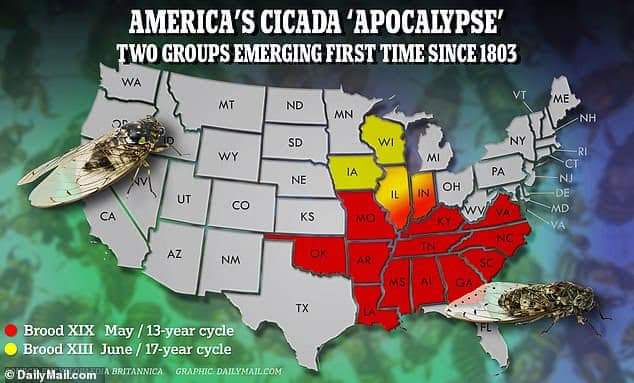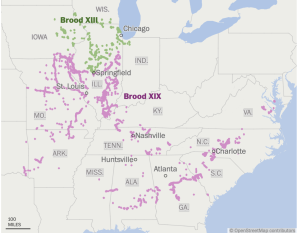This spring, billions of bugs from two different broods of red-eyed, high-decibel periodical cicadas are expected to emerge together — and possibly interbreed — in the middle of the country for the first time since 1803.
Brood XIII cicadas, mostly concentrated in Illinois, Iowa and Wisconsin, come out of the ground every 17 years. Their Brood XIX cousins emerge every 13 years and are spread across the Midwest and Southeast. Between them, they represent all seven known species of periodical cicadas.
The hybrid XIII/XIX offspring could form a new brood or an add a new branch to an existing brood. “Population genetics in these guys is wild so we will only know in 13 years what is happening with those hybrids,” said Floyd Shockley, entomology collections manager at the National Museum of Natural History and the Smithsonian’s resident cicada expert to the Washington Post back in January.

